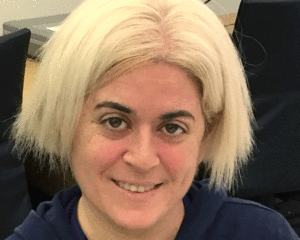
The Scene staff
Coming from communist states Russia and Poland, atheism is all he knew. Nevertheless, when I started kindergarten at a public school in Ohio, my parents sent me to an orthodox Jewish synagogue for Sunday school, where I read the children’s version of Torah (Old Testament) stories and spun the draidle on Hanukkah. For my consecration, I chose the story of Jonas and the Whale.Without any anti-semitic undertones, other students at the public school would innocently tease me about my religion. I would say, “I am half-Jewish and half-Christian,” but somehow, I was a little ashamed that I was Jewish and clung to the fact that my paternal grandmother was a Christian.
On my journey to find a religion that fit for me, I found that Judaism indeed was the appropriate destination. But among some sects within the religion, I had choices to make:
Ultra Orthodox
Men usually wear a black kaepa, or yarmulke (a small circular cap), or black fedora and usually dress all in black. Married women usually wear a hat or knit cap, with a skirt past their knees. They do not drive on Shabbat – the weekly holiday from sunset Friday to sunset Saturday. You will often see them walking on Delmar Boulevard in University City. They eat only kosher meat (in which the animal is slaughtered humanely), and do not consume meat and dairy during the same meal. For the ultra-Orthodox, talking about Torah is an important part of every lengthy conversation after the initial “schmooze” (normal chatting).
Modern Orthodox
A lot of modern Orthodox wear head coverings, but some only wear a kaepa or hat to synagogue. They are often professionals in medical or law fields. They are able to spend one full day away from work because they also celebrate Shabbat on the weekend. During this time, however, doctors are still on call and are obligated to visit their patients. In both ultra Orthodox , modern Orthodox and Conservative, emphasis is put on reading Hebrew and interpreting the Torah. This interpretation is called Midrash. Discussing Midrash is an intellectual and fascinating experience. Modern Orthodox keep kosher at home but often eat vegan at restaurants.
Conservative
They keep kosher in a different way, because legend is that God asked the Jewish people not to eat meat at all; however, they bargained with God to kill animals humanely and thus to eat them. Therefore, the Conservative movement asks that we are just ovo-lacto-pescatarian, a diet that includes fish, dairy and eggs. Most members of the Conservative movement drive to synagogue and tend to be vegetarian. Conservative followers also celebrate Shabbat, but they are more mainstreamed. Conservative Jews, like all the Orthodox, enjoy Midrash; however, women can even wear miniskirts and most do not wear any type of hat during the workweek.
Reform
This is an excellent place for women, minorities and converts. The movement is also inclusive of women rabbis. “Spiritually Jewish” is the description that is most accurate for the movement. Because this sect is still monotheistic, it falls under the umbrella of Judaism; however, it has no lifestyle restrictions. Eating meat from swine is a no-no for the sects listed previously; but Reform does not see eating ham as a problem. Also, converts and minorities find being in the Reform movement easier and inclusive of them. Reform training takes only a year for anyone converting to Judaism. For Conservative and Orthodox, training can take from four to 10 years.
Reconstructionist
This is an artistic development of Judaism, seen as “alternative.” Conservative, Reform and Reconstructionist make use of instruments during Shabbat. Reconstructionist instruments are soul friendly. In Reconstructionist and Reform, anything goes: no eating restrictions, no need to follow traditional Jewish traditions.
I tried all of these sects. Several years ago, I left a modern Orthodox synagogue, and I decided to sit out of synagogue for a few months.
But at a restaurant one day, I started talking with a nice elderly man who told me he was a philanthropist and invited me to the Conservative synagogue Kol Rinah in U. City.
I went, and I am having the time of my life there. I have been a member for four years, and I have never felt this welcome anywhere else.
Members even stood by me while I was exploring Catholicism with a friend for two years. He and I attended Mass most Sundays for almost two years.
I felt uneasy because I am naturally monotheistic, but I considered converting because my friend wanted to marry me. But he insisted that I become Catholic; he put me in “the marriage trap.”
In the end, I decided that I am still Jewish, because Judaism is the matrix of my choice. In the end, religions are matrices — and if you believe in being in a matrix, you can find the religion that fits your needs and values.
This world is full of choices. I am Jewish by birth, and now also choice because I explored another major religion.
